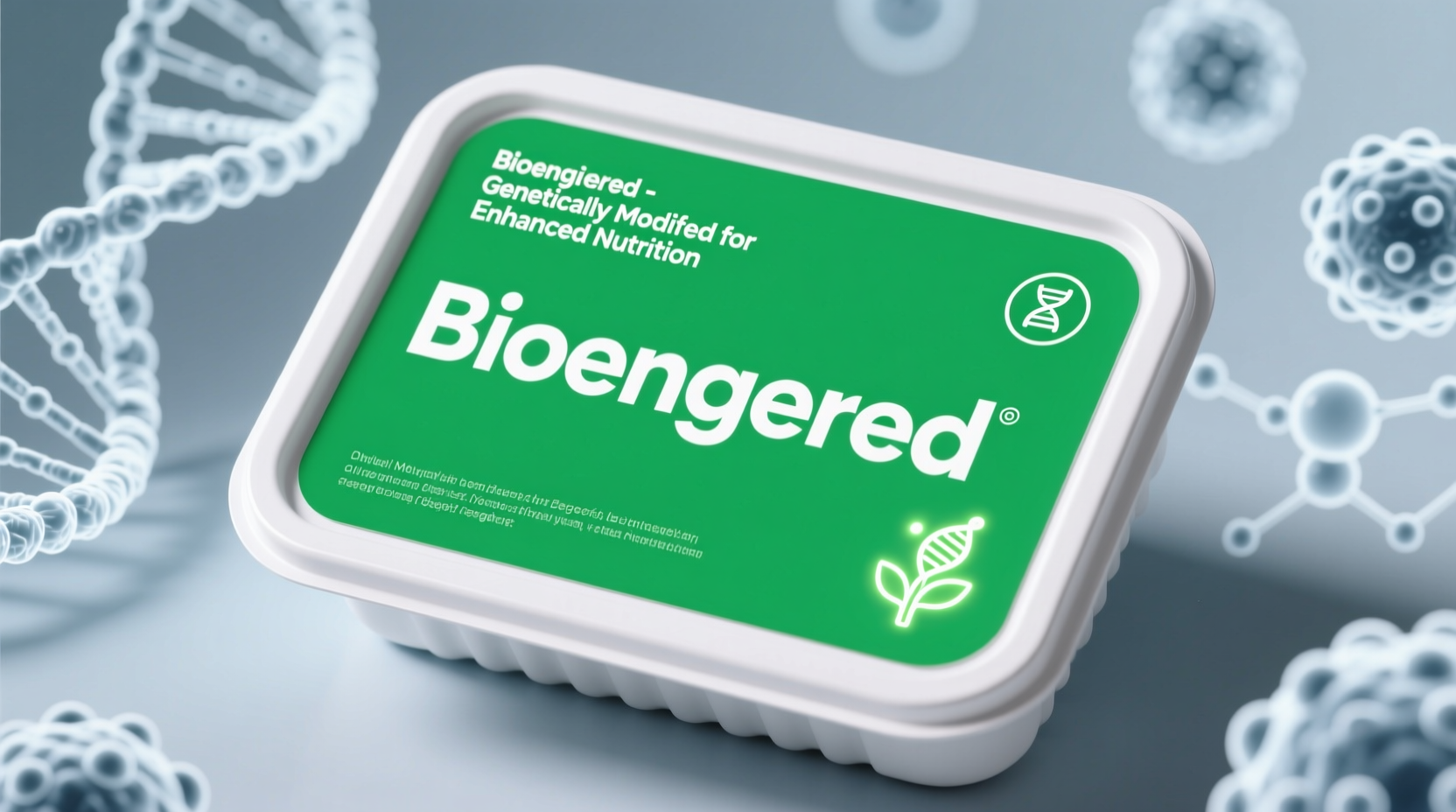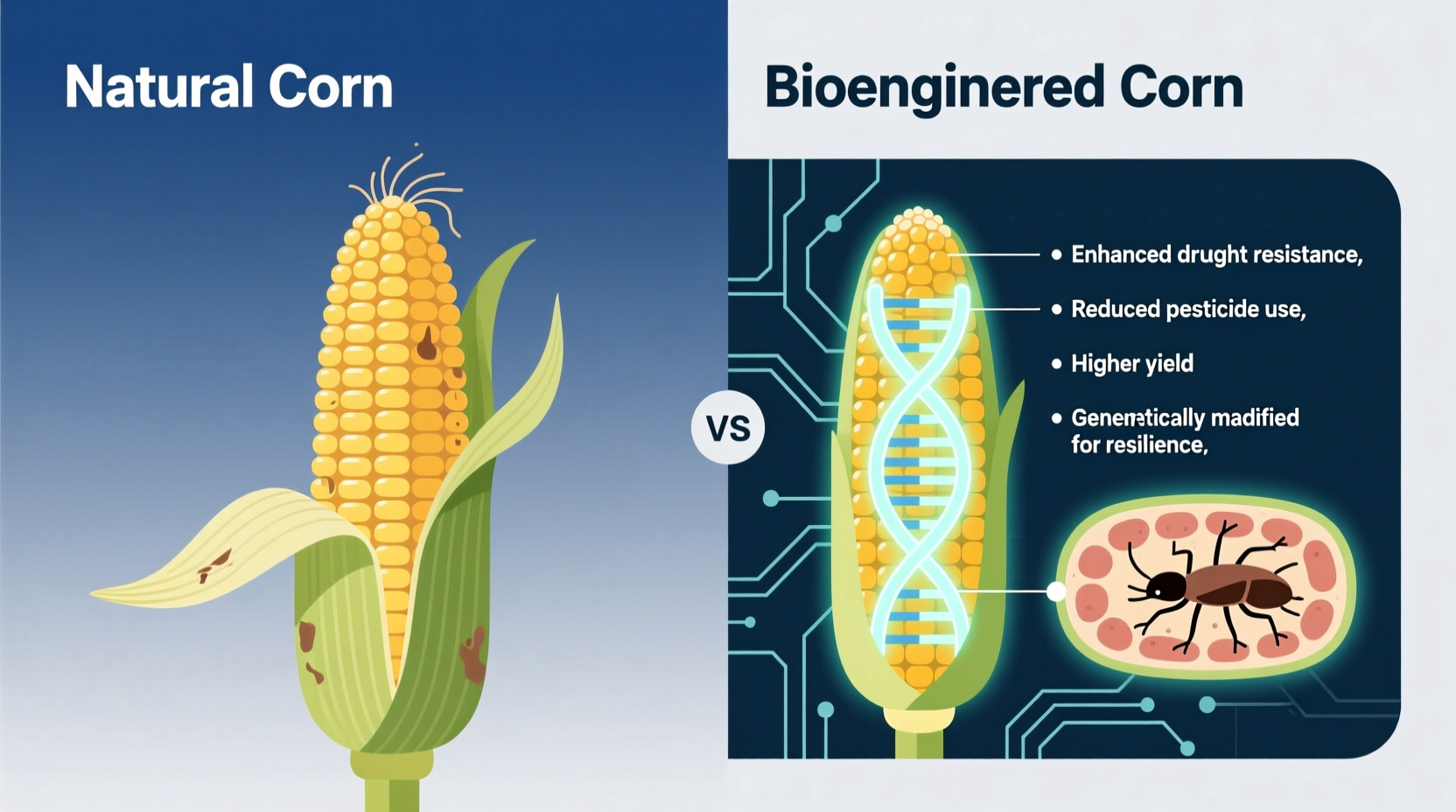Bioengineered food refers to products containing detectable genetic material that has been modified through laboratory techniques, with the modification not occurring naturally. Unlike traditional GMOs, bioengineered foods specifically contain foreign DNA that can be verified through testing. The U.S. National Bioengineered Food Disclosure Standard requires clear labeling of these products since 2022.
Ever wonder how your food gets its enhanced traits? Understanding bioengineered food is crucial for making informed choices at the grocery store. This guide delivers the essential facts you need about what bioengineered foods are, how they're regulated, and what appears in your everyday products. We'll cut through the confusion between terms like "GMO" and "bioengineered" while providing scientifically backed information from authoritative sources.
What Exactly Is Bioengineered Food?
Bioengineered (BE) food describes agricultural products that contain genetic material altered through in vitro recombinant DNA techniques. The key distinction is that these modifications could not be created through conventional breeding or found in nature. The U.S. Department of Agriculture defines bioengineered foods as those containing "detectable genetic material that has been modified through certain lab techniques and for which the modification could not otherwise be obtained through conventional breeding or found in nature."
This precise definition emerged from the National Bioengineered Food Disclosure Standard (NBFDS), which took effect in January 2022. The regulation created a clear distinction between older "GMO" terminology and the specific category of foods containing verifiable genetic modifications.
| Term | Definition | Regulatory Status |
|---|---|---|
| Bioengineered (BE) | Foods with detectable modified genetic material from lab techniques | Federally mandated labeling since 2022 |
| GMO | Broad term for organisms with altered genetic material | No specific federal labeling requirement |
| Conventional | Products created through traditional breeding methods | No special labeling required |
| Organic | Products meeting USDA organic standards (no bioengineering) | Certified organic label required |
How Bioengineered Foods Became Labeled
The journey to today's labeling requirements represents years of regulatory development. Understanding this timeline helps clarify why "bioengineered" has become the precise legal term:
- 2016: Congress passes the National Bioengineered Food Disclosure Law, creating a federal standard
- 2018: USDA finalizes the National Bioengineered Food Disclosure Standard
- 2019-2021: Implementation period for food manufacturers to update labeling
- January 1, 2022: Mandatory compliance date for most manufacturers
- 2023-Present: Ongoing enforcement and refinement of disclosure methods
This regulatory evolution responded to consumer demand for transparency while creating a consistent national standard, replacing previous state-level initiatives like Vermont's GMO labeling law.

Common Bioengineered Foods in Your Pantry
You'll find bioengineered ingredients primarily in these everyday products:
- Corn products (high-fructose corn syrup, corn starch, corn oil)
- Soybean derivatives (soy oil, soy lecithin, soy protein)
- Canola oil
- Sugar from sugar beets
- Papaya (specific Hawaiian varieties)
- Squash (certain yellow and zucchini varieties)
Look for the "Bioengineered" or "Derived from Bioengineering" disclosure on packaging. The USDA specifies three acceptable disclosure formats: text statement, symbol, or electronic/digital link (like a QR code) with a telephone number option.
What Science Says About Safety
Multiple authoritative organizations have evaluated the safety of bioengineered foods:
"After 20 years of widespread use, both American and international scientific authorities have found foods from GE plants to be as safe as foods from non-GE plants." — U.S. Food and Drug Administration
A comprehensive review by the National Academies of Sciences, Engineering, and Medicine analyzed over 1,000 studies and concluded that genetically engineered crops are safe for human consumption. The World Health Organization similarly states that "no effects on human health have been shown as a result of the consumption of such foods by the general population in the countries where they have been approved."
It's important to understand that bioengineering represents a precise tool rather than an inherent risk factor. Each modification undergoes evaluation, and the scientific consensus focuses on the specific trait introduced rather than the technique itself.
Making Informed Choices at the Store
When shopping, look for these key indicators:
- Official "Bioengineered" text disclosure
- USDA Bioengineered Food symbol (sunflower-like logo)
- "Derived from Bioengineering" statement
- QR codes linking to disclosure information
Remember that products labeled "organic" cannot contain bioengineered ingredients by USDA organic standards. The "Non-GMO Project Verified" label indicates voluntary testing but represents a different standard than the federal bioengineered definition.
Practical Considerations for Consumers
Understanding bioengineered food labeling helps you navigate grocery choices effectively. Consider these practical points:
- Bioengineered labeling applies only to foods with detectable modified genetic material
- Highly refined products like sugar or oil may not require labeling if no modified genetic material remains
- Small food manufacturers have different compliance requirements
- Restaurant foods generally don't require bioengineered labeling
The primary purpose of labeling is transparency, not safety indication. Many scientific organizations emphasize that bioengineered foods undergo rigorous safety assessments before market entry, similar to conventionally developed foods.











 浙公网安备
33010002000092号
浙公网安备
33010002000092号 浙B2-20120091-4
浙B2-20120091-4